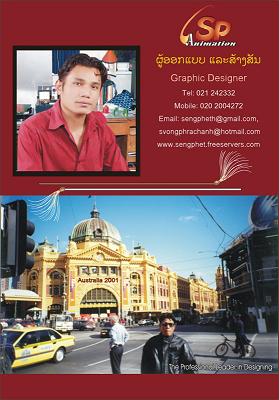Travel and Entertrainment
Visit Muong Lao
Low-key Laos is not among the "Asian tigers," the group of small- and medium-sized nations that have embarked on ambitious, high-energy growth plans. Rather, Laos is more like the Asian silkworm, living within an elegant cocoon, hoping to be allowed to develop at its own pace, in relative isolation.
On our last visit, we saw signs that the incubation period might be nearing an end. Each year, official travel restrictions decrease, and services expand. In temple-laden Luang Prabang, the prettiest city in Laos (and, in our opinion, all of Southeast Asia), a modern airport greets direct flights from Chiang Mai, in northern Thailand; the facility's size and amenities reflect a hopefulness that tourist traffic from there will be plentiful and steady. Changes are evident in town as well, with luxury resort operators vying for the hottest properties.
Still, most of the countryside remains unseen by visitors -- few venture off the beaten path. By all means, take in the primary sights of Laos, but also be sure to make excursions into the provinces. Much of what you'll see is stunning, and you can go days without seeing another traveler.
The city's history has been a turbulent one, as its meagre collection of structures from the past suggests. It had been occupied and subsequently abandoned by the Mon and then the Khmer long before the Lao king Setthathilat moved his capital here from Louang Phabang in 1560. After that, the city was overrun or occupied several times by the Burmese, Chinese and, most spectacularly, by the Siamese who levelled the entire place in 1828. By the end of the nineteenth century, the French controlled most of what is now Laos, Cambodia and Vietnam and had rebuilt Vientiane as an administrative capital. As with other urban centres in the region, the majority of modern Vientiane's merchant class are ethnic Chinese and Vietnamese, whose forefathers immigrated to Laos during the French era. Though the city was left relatively unscathed by the Second Indochina War, a large percentage of Vientiane's population found it necessary to escape across the Mekong after the formation of the Lao People's Democratic Republic; they were replaced by immigrants from the former "liberated zone" in northeastern Laos, further changing Vientiane's ethnic make-up. Not until the collapse of the Soviet Union in 1991 was the government forced to rethink its opinions of capitalism, paving the way for the explosion of new ventures and businesses.
Two days is sufficient to see Vientiane's sights. High on your list should be the museum of Lao art, housed at the Haw Pha Kaew, and the socialist-era Lao Revolutionary Museum. The placid Buddhist monastery known as Wat Sisaket offers a good half-day diversion, and you should take a ride out to That Louang, Laos's most important religious building, to admire the effects of a sunset on its golden surface. A popular day-trip destination is Xiang Khouan or the "Buddha Park", a Hindu-Buddhist fantasy in ferro-concrete on the banks of the Mekong. Off the beaten track is the eco-resort of Lao Pako, on the Nam Ngum River, while further afield, the laid-back town of Vang Viang, set amid spectacular scenery on the road to Louang Phabang, has recently become a travellers' favourite.
A Part of my Success
Enjoy With our Services
Hugging a bend of the Mekong River, the low-rise capital of Laos is a quaint and easygoing place compared to Southeast Asia's other frenetic capitals, looking more like a rambling collection of villages than a city. However, in the mere decade since Laos reopened its doors to foreign visitors, VIENTIANE has changed with dizzying rapidity: new businesses are popping up all over the place, and scores of old shade trees have been cut down to accommodate an ever-multiplying number of cars and motorbikes.
Sengphet Vongphracahnh
